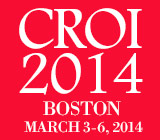 A study investigating the tolerability and efficacy of the investigational HIV antiretrovirals (ARV) GSK744 and Edurant (rilpivirine) has laid the groundwork for a future trial of long-acting versions of these drugs, MedPage Today reports. This was a Phase IIb trial comparing treatment with the integrase inhibitor GSK744 and the reverse transcriptase inhibitor Edurant to a standard triple regimen of Sustiva (efavirenz) and two nucleoside reverse transcriptase inhibitors (NRTIs). Forty-eight week results were presented at the Conference on Retroviruses and Opportunistic Infections (CROI) in Boston.
A study investigating the tolerability and efficacy of the investigational HIV antiretrovirals (ARV) GSK744 and Edurant (rilpivirine) has laid the groundwork for a future trial of long-acting versions of these drugs, MedPage Today reports. This was a Phase IIb trial comparing treatment with the integrase inhibitor GSK744 and the reverse transcriptase inhibitor Edurant to a standard triple regimen of Sustiva (efavirenz) and two nucleoside reverse transcriptase inhibitors (NRTIs). Forty-eight week results were presented at the Conference on Retroviruses and Opportunistic Infections (CROI) in Boston.
A total of 181 treatment-naive study participants were divided into three treatment groups who received three respective daily oral doses of GSK744 for 48 weeks: 10, 30 and 60 milligrams. During the first half of the treatment period, the drug was combined with two NRTIs. During the last 24 weeks, the investigators swapped the NRTIs with Edurant.
A comparison group received Sustiva plus two NRTIs for 48 weeks.
The rates of viral suppression between the two study groups was not statistically different, meaning that any apparent difference in the data may have been a result of chance and that the drug regimens appear to be essentially comparable in efficacy. After 48 weeks, 82 percent of those who received at least one dose of the study drugs had achieved and maintained an undetectable viral load, compared with 74 percent of those who received at least one dose of the drugs in the Sustiva group.
A long-acting version of GSK744 is already being investigated as a form of pre-exposure prophylaxis (PrEP) and has shown promise in trials in primates to protect against both vaginal and rectal exposure to HIV (or SIV, HIV’s simian cousin, in the case of the primates). Meanwhile, a long-acting form of Edurant is currently being developed.
This study opens the door for a study of a long-acting therapy with intramuscular injections of GSK744 and Edurant every four to eight weeks.
To read the MedPage Today story, click here.
To read the conference poster, click here.
Advertisement
Advertisement
Advertisement






Comments
Comments